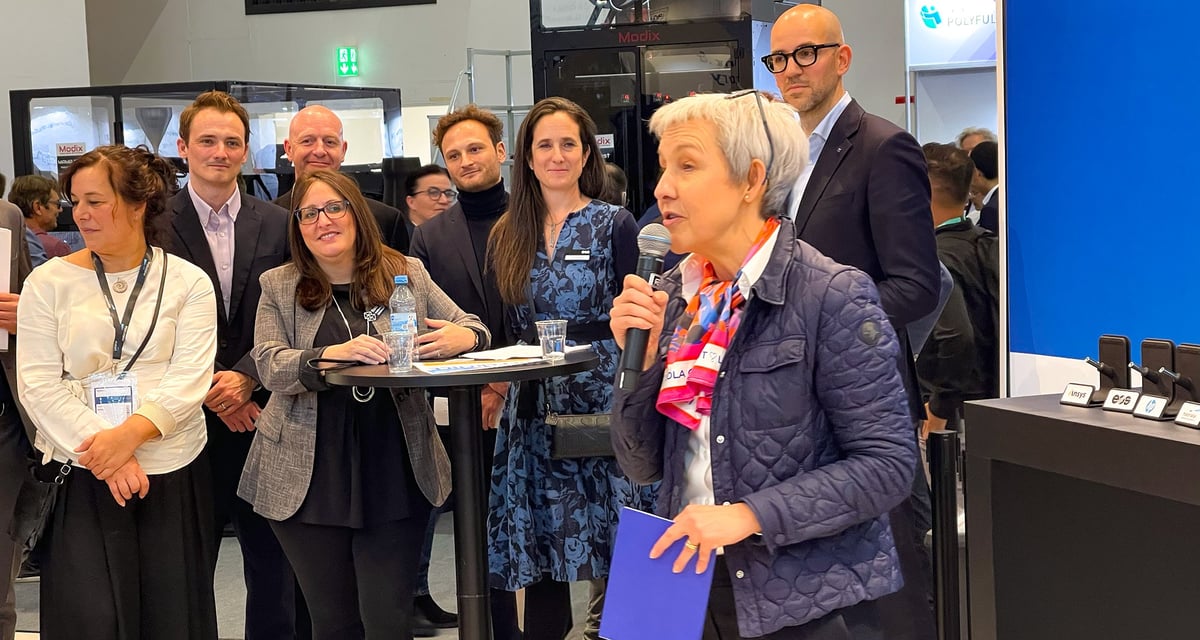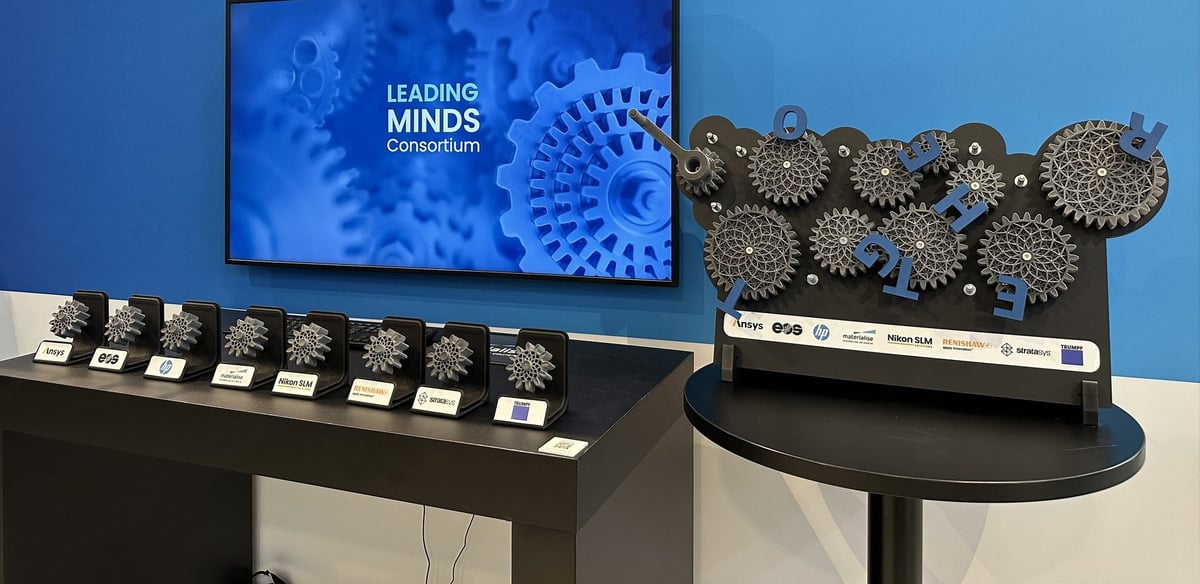Nearly every major company in additive manufacturing is chasing the same goal: to transition 3D printing from a niche innovation for prototyping to a trusted solution for volume manufacturing.
Although there are various technologies, materials, and approaches, this common goal is more effectively — and more rapidly — achieved if companies all pull in the same direction, share resources, and collaborate.
This is the thought behind a new group effort from eight major AM companies — Ansys, EOS, HP, Materialise, Nikon SLM, Renishaw, Stratasys, and Trumpf — called Leading Minds.

These companies compete on many fronts and often chase the same small slice of the manufacturing pie dedicated to those companies that have adopted 3D printing. The new realization is that together they can grow that slice.
The group has lofty objectives: create a more adaptable, sustainable, and versatile manufacturing ecosystem; challenge the barriers to 3D printing adoption, such as a lack of expertise, perceived high costs, and sometimes complex integration with established processes; and make the technology more accessible to a broader range of manufacturers.
How? A lot has yet to be nailed down, but as Brigitte de Vet-Veithen, CEO of Materialise told All3DP at Formnext last week, three things would represent a success in the short term.
“The first, is that we have created a shared vocabulary, and then we start labeling stuff that is the same thing in one way and not 25 different ways,” says Vet-Veithen.

Hopefully this effort will address some of the technology confusion we at All3DP have worked to clarify over the years. For example, metal laser powder bed fusion (M-LPBF) is the same as selective laser melting (SLM) and direct laser metal sintering (DMLS); fused deposition modeling (FDM) is the same as fused filament fabrication (FFF); and even, more recently, what 3D Systems calls its new projection stereolithography (PSLA), is technically, no different from digital light processing (DLP), which is actually a trademarked term from Texas Instruments. No wonder end users are confused.
In the past, these branded terminology may have been a way for companies to differentiate themselves, but now it’s really just creating confusion that stands in the way of growth and adoption, says Vet-Veithen.
The second goal is very visible one where the consortium takes an initiative to create awareness towards manufacturing segments. This could be, for example, going to an aerospace show as an industry and not just individual companies so spotlight the use of various AM technologies in aerospace. On the education side, a good example of a possible action would be to work with university professors on a core AM curriculum.
The third KPI is simply to nail down an actionable plan with steps that each company can take. Having just come together after an initial idea this past spring, the consortium still has a lot of specifics to iron out.
Can Anyone Join?
Although Vet-Veithen says that the consortium is open for other leading companies to join in the future, for now, the focus is on making progress. Industry-wide initiatives with a lot of chefs in the kitchen have a tendency to create more buzz than substance. “We really hope to do this differently and make progress on small steps, but important steps going forward,” she adds.
Leading Minds could become a quality stamp or a industry spokes-organization quoted in the media or even a training center; the specific form is still flexible. What it can avoid, that companies can not, is having its efforts perceived as marketing or anti-competitive.
“We need to be pragmatic enough to move forward and make steps if we want to make sure that, next year, when we’re standing here at Formnext, we actually have some specific results to announce.”
You May Also Like:
License: The text of "Can This Dream Team of 3D Printer Makers Fix Additive’s Sluggish Adoption?" by All3DP Pro is licensed under a Creative Commons Attribution 4.0 International License.


